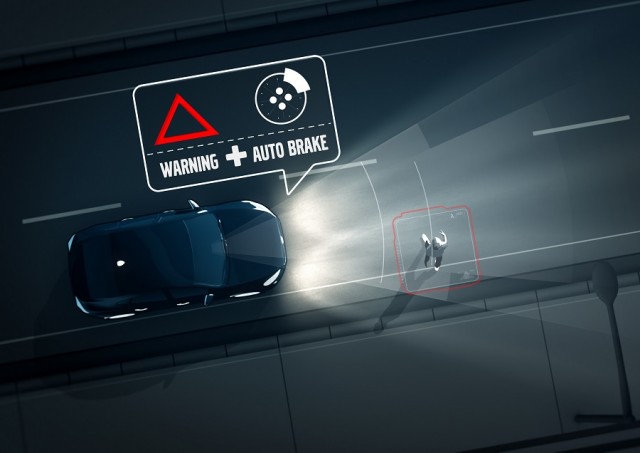Drip, drip, drip. Nope, not a leaky tap. Drip, drip, drip. No, not a review of the Justin Beiber album, but the continual slow release of factoids about the upcoming new Volvo XC90, which, as you must know by now, will be revealed in August. Today's episode of Volvo XC90 Street is therefore brought to you by the letter P and the number 999...
First up is word of the XC90's clever self-parking system, which uses a set of sensors around the car to measure a parking space as you drive by, alert you that it's big enough and then take over all the steering so that you can pull off parallel parking or slot seamlessly into a parking bay. While the car is doing the donkey work, you can watch everything on a surround-view camera system that gives you a bird's eye, top-down view of proceedings. "Several studies by research institutes reveal that up to two-thirds of interviewed motorists feel uncomfortable in tight parking situations. Options such as the extended Park Assist Pilot and bird's-eye view function turn these potentially stressful situations into comfortable, precise and safe manoeuvring," says Dr Peter Mertens, Senior Vice President Research and Development of Volvo Car Group. The system can fit you into a space just one-metre longer than the car itself, which is pretty remarkable.
On a more serious front, Volvo is (perhaps unsurprisingly) extending the XC90's safety technology envelope. The original XC90 pioneered such things as roll-over protection and curtain airbags, but the new one has a few more tricks up its sleeve.
First up is run-off-road protection. Volvo claims that, especially in the key US market, drivers nodding off and veering off the tarmac and into the wilderness is a serious, frequent issue. If the XC90 detects that this is happening, it pulls all the seat belts tight so as to hold occupants in the safest possible position and the seats and their frames have special construction and padding to help mitigate the sort of common spinal injuries that come from a car driving off road and crashing down an embankment.
In order to try and prevent that happening in the first place, the XC90 also has a driver drowsiness detection system that can call up the nearest rest stop on the satnav, while the steering can hold the car in lane for a few seconds if you drop off. "Our starting point on safety is the same today as it was 87 years ago: real-life situations," says Dr Mertens. "We study data. We crunch numbers. We innovate. The result is one of the safest cars ever made."
The XC90 also includes a new function in the highly-acclaimed City Safety autonomous braking system. It can now detect if you're turning across the path of an oncoming car at a junction and brake to either avoid the collision or mitigate its effect. "These two world firsts are further examples of how new technologies target substantial real-life traffic problems. This strategy moves us closer and closer to our ambition that by 2020 no one should be killed or seriously injured in a new Volvo," says Prof. Lotta Jakobsson, Senior Technical Specialist Safety at Volvo Cars Safety Centre. City Safety is now going to be the umbrella name for all of Volvo's autonomous braking devices and systems.
Added to all of this is an improved rollover protection system, a better camera for the City Braking system that works more effectively at night, a curtain airbag that stays inflated after an accident to prevent head injuries from subsequent impacts, a rear-collision detection system that flashes the lights to warn the driver behind and tightens the seat belts, a blind-spot monitor and, if it all goes horribly wrong, super-strong and super-light boron steel construction for the body.
Anything else?
"Committing to safety is not about passing a test or getting a ranking," says Jakobsson. "It is about finding out how and why accidents and injuries occur and then developing the technology to prevent them. We lead, the industry follows."

